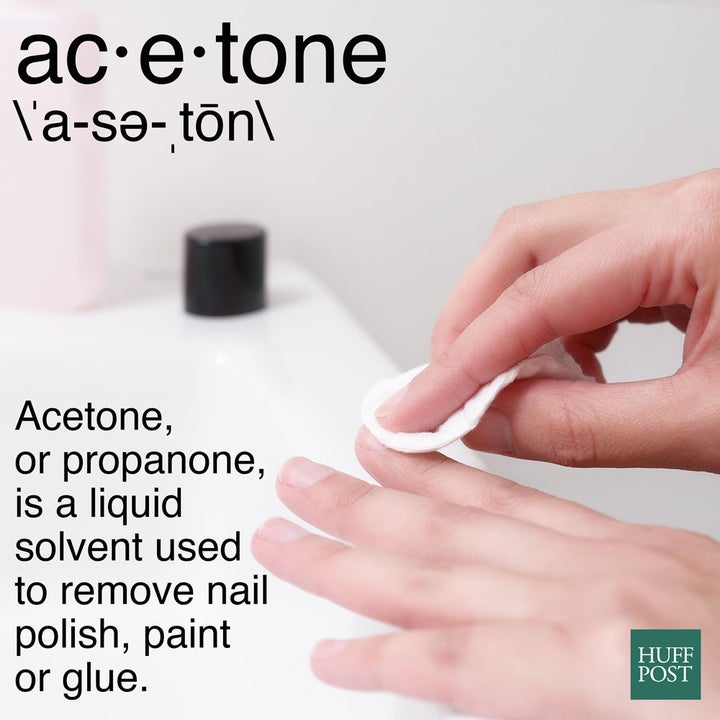"Beauty Glossary" is a HuffPost series that breaks down beauty product techniques, treatments and ingredients so you know exactly what you're putting onto and into your body.

When we need to remove stubborn nail polish or a glitter top coat, acetone always gets the job done. The downside: our nails look and feel dry immediately after swiping away all that polish.
That's because acetone is essentially a paint stripper. "Super dry, damaged nails will get drier and more brittle with acetone exposure," says board-certified dermatologist and nail specialist Dana Stern.
"Many people don’t realize that the damage that we do to our nails is not from the polish but rather the remover," says Stern. "The polish can actually be protective to the nail. Taking a break from polish remover exposure allows the nail to recover."
According to Stern, nails that are lifted or separated from the nail bed (also known as onycholysis) should not be regularly exposed to acetone because the solvent will bathe the delicate, exposed nail bed causing irritation and further separation. "Polish remover significantly dries out the nail, leading to brittleness, splitting, peeling and breakage," she says.
Stern adds, "Acetone also dissolves the polish and makes the pigments migrate and leach. This process can cause post-polish yellowing."
Due to the dehydrating aspects of acetone, celebrity manicurist Gina Edwards for Kiss Products says it may also dry cuticles when used on a regular basis. "This will leave the skin open for hang nails and splits on the nail surface," she explains. "We don't realize it, but there are many skincare and hair products that have acetone in the ingredients just broken down in a diluted form."
If you are tolerating a weekly manicure and your nails don't look super dry, stripped and brittle when your polish is removed, Stern believes there is no reason to change your routine. However, she notes that gel manicures require a 10-minute pure acetone soak and that will usually cause extensive drying to the nails.
"I like to dab each nail with some remover and then go back to each one and individually swipe them clean," says Stern. "The first dab gets the polish dissolving. Theoretically, the faster you can remove it, the less exposure your nail has. Always remember to wash afterward with soap and water."
For at-home manicures, Edwards suggests using a non-acetone remover to take off your polish. If you wear gels or acrylics, she thinks it best to make your regular nail appointment to have a professional remove your enhancements with acetone.
Edwards also has an easy trick to replenish nails with hydration: Add cuticle oil to your acetone and mix it with non-acetone so it's not too harsh on your skin.
Looking for non-acetone nail polish remover? Shop our editors' picks below.